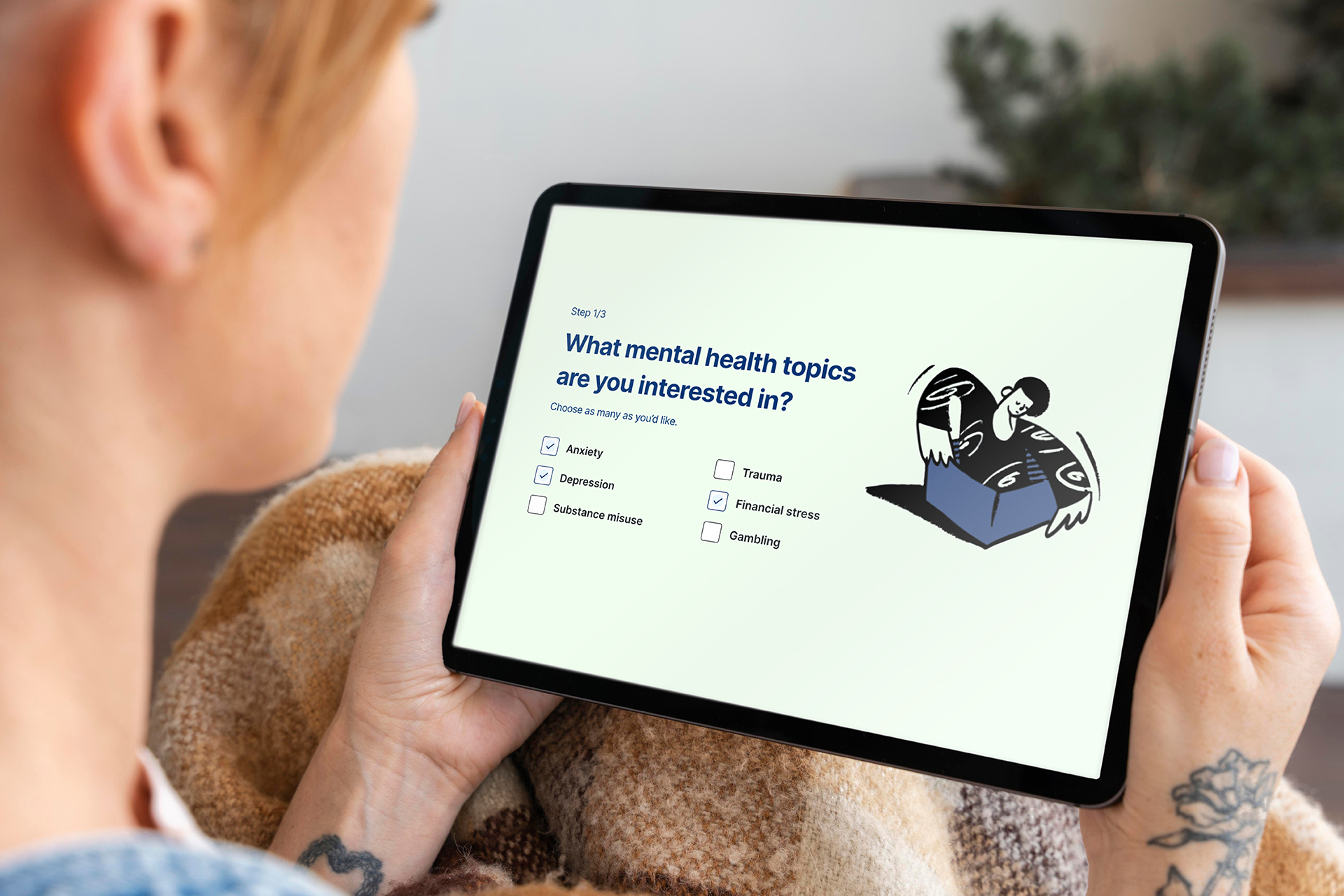Journal
New work
A lifeline, before you need it most
The value of a mental health resource tailored to self-led support, from Lifeline

Lifeline is one of Australia’s most recognised support services and these days is increasingly a trusted destination for mental health information and services.
Each year, over 1 million people reach out to Lifeline for support, with Lifeline’s 13-11-14 crisis support line receiving a call every 30 seconds (Source: Lifeline).
Since COVID, more people are seeking help than ever before, and the types of help they’re looking for are changing.
For example, some help seekers might not feel ready to call, or might think their concerns aren’t worthy of calling Lifeline. Some people might simply prefer to explore their options on their own, or be in a situation where they simply can’t chat one-on-one. We also know that 75% of people who die by suicide are men (ABS, 2022), who are more likely to be seeking practical resources, and things they can do themselves.
For 60 years, Lifeline has supported Australians in crisis, but hasn’t catered to people seeking self-led support.
In response, a new digital product, the Support Toolkit, was launched last year providing practical, trusted and understandable mental health content in an accessible online format.
Opportunities to create more value for mental health help seekers and their supporters

The Lifeline team had already identified three new features they believed could improve the product and user experience and sought to develop prototypes to test these feature ideas. Over several weeks, we spoke with 16 help seekers and supporters that represented a variety of mental health experiences, mental health literacy levels, ages and identities.
Our key findings and insights
Of the three features ideas, one feature had the potential to create and deliver the most value for help seekers and supporters:
We heard that personalised, relevant, timely and useful content, delivered via email, is considered high value and can have a strong influence on people’s behaviour.
The interesting insight here was that email communication acts as a motivator or trigger for positive actions and acts like a reminder about self-support actions that individuals can take to keep themselves on track.
Receiving emails means I’m getting feedback. It means there is someone out there that is prepared to give me assistance.
Lifeline User Research
Saving and re-accessing mental health content
Another feature idea related to creating ways for people to save and share content, and more importantly, how willing people would be to re-access saved content in the future, in order to improve their own mental health habits and behaviours.
Although this hypothesis was framed around ‘saving’, the real focus was on whether being able to save content would lead to behaviour change and improved mental health.
Even though the people we spoke to said they liked the idea of saving on the platform, it was clear they already had well-established ways of saving content. This included taking screenshots on their phone or computer, saving PDFs, re-accessing emails or keeping web browser tabs open.
In short, as people already have ways they save information, building a save feature on the platform is relatively low value.
Better support for supporters
One of the most important learnings related to the need to focus more on developing content and value for the supporter experience. There isn’t as much content and self-led support out there specifically for supporters and carers.
This learning is consistent with other Folk research in the mental health space; carers and supporters of people with lived experience of mental ill-health have previously identified a lack of relevant content that spoke directly to their needs and challenges.
Where to from here
As more people look to Lifeline for support, and are guided to the Support Toolkit, more help seekers might opt for self-led support. There’s clearly a need for the Support Toolkit and Lifeline are the right organisation to deliver it.
We‘d recommend exploring the Support Toolkit, while you might not think it’s for you right now there might be someone in your life who could benefit.
You never know the impact it could have.
Check it out here: Support Toolkit.
